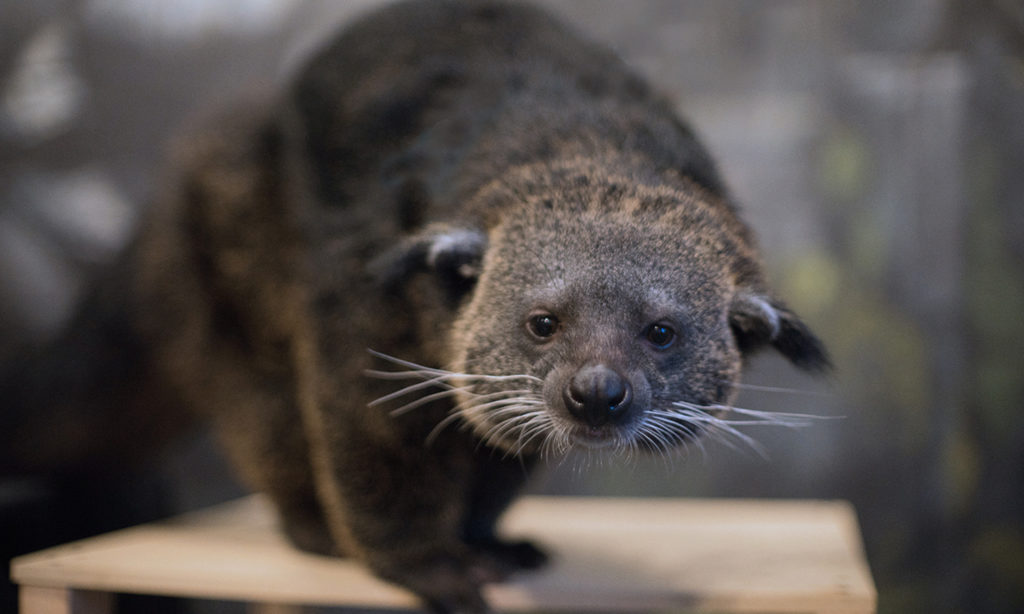Arctictis binturong
Fast Facts
- Binturongs smell like buttered popcorn! This is due to a compound in their urine which shares a similar chemical compound to one found when heat causes a reaction between the amino acids and sugars in a kernel of corn during the popping process. Binturongs use their urine to mark their territory, and males have a higher concentration of the chemical compound than females do.
- Binturongs belong to the viverrid family of mammals, which includes civets and genets. This family is in the suborder Feliformia and is, therefore, somewhat related to cats. Some shared feline characteristics include semi-retractable claws, mobile ears, and long tails for balance in trees. However, their closest familial relatives are mongooses.
- They are often called bearcats.
- Scientists believe binturongs are one of 100 species of mammals capable of delayed implantation.


Range
Southeast Asia

Habitat
Tall forests and secondary lowland forests

Size
28 to 33-inch body, and 27-inch tail

Nutrition
fruits, insects, birds, rodents, fish, earthworms, and eggs
Characteristics
The Binturong’s long body is heavy, with short legs, and thick, dense, black fur. Their short, pointed muzzle has bristly whiskers surrounding a turned-up nose. The ears are small and rounded, sometimes edged with white. Their tail is prehensile and is nearly as long as the animal’s body.
Behavior
Binturongs are primarily arboreal, though they do spend time on the ground as they move from tree to tree. Activity patterns are irregular, and they do not adhere to strict nocturnal or diurnal cycles. The seeds of several varieties of fruit pass through their digestive system without being damaged. Because of this, Binturongs are likely important for the dispersal of different plant species.
Reproduction
Binturongs have a 91-92 day gestation, and litter sizes range between having one to six young. Males reach sexual maturity around 30 months, but the average for females is lower, around 27 months. Scientists believe Binturongs are one of 100 species of mammals capable of delayed implantation (the ability for females to internally store the sperm of males and wait until environmental conditions are ideal before fertilizing the egg.)

